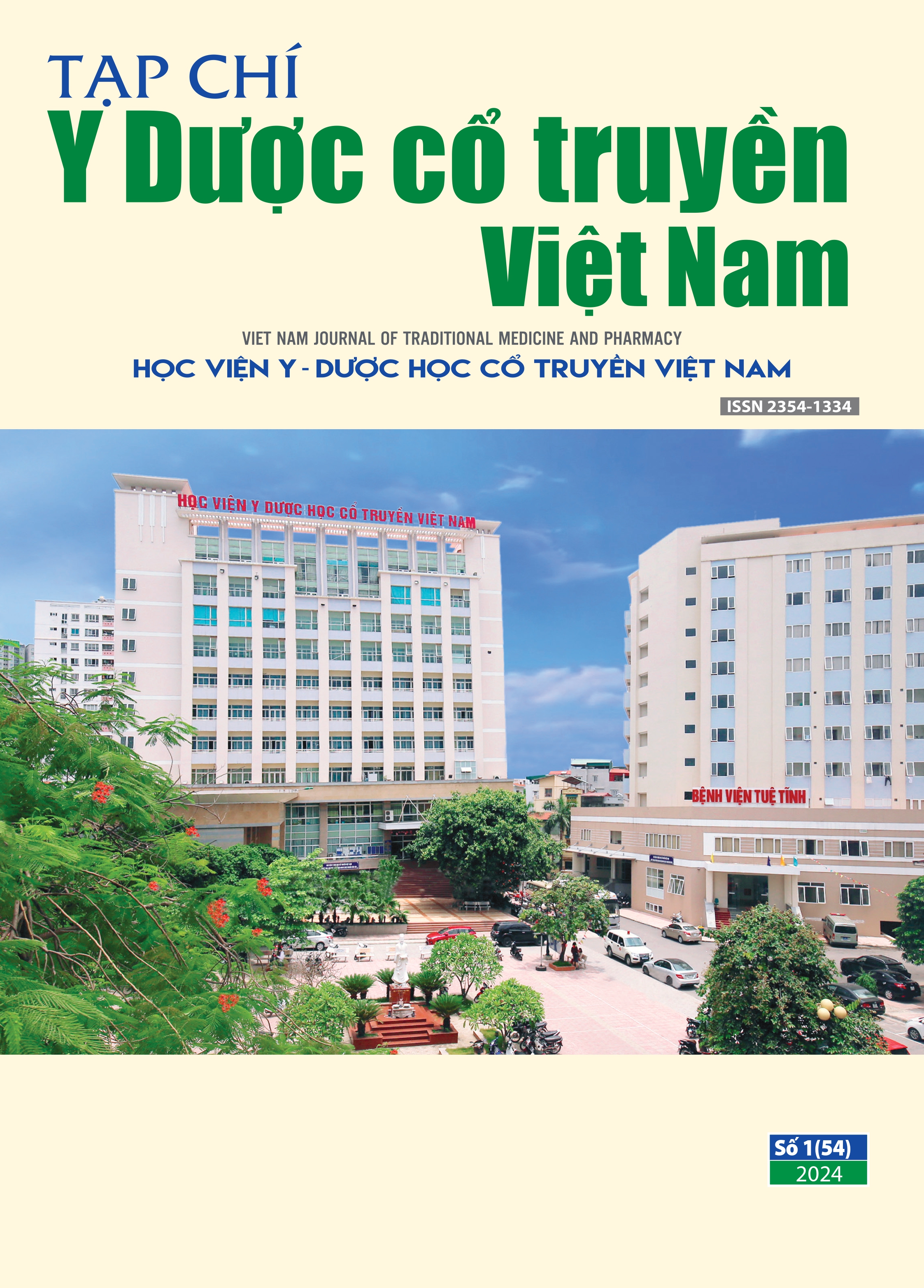Research on the clinical, subclinical features and related factors of gestational diabetes
Main Article Content
Abstract
Objectives: To describe the clinical, subclinical features and related factors of gestational diabetes patients at the National Hospital of Endocrinology in 2023.
Subject and methods: A descriptive cross-sectional study combined with retrospective data analysis was conducted to describe the clinical and subclinical characteristics of 185 pregnant women who received inpatient treatment at the hospital.
Results: The mean age of women with gestational diabetes was 32.6 ± 5.1 years, with the highest proportion in the 30-34 age group of 38,4%. Risk factors included a history of miscarriage in 43.9% of cases, BMI overweight and obesity was 34.1%, and a history of gestational diabetes in 10.8%. The percentages of patients with elevated triglycerides, cholesterol, and LDL-C were 84.3%, 76.2%, and 64.8%, respectively. The patients age, BMI, physical activity before pregnancy, and the frequency of consuming saturated fat were statistically significant factors associated with lipid disorders with p<0.05.
Conclusions: The prevalence of dyslipidemia in pregnant women with gestational diabetes is relatively high. It is essential to monitor lipid profiles and implement strategies to control dyslipidemia to prevent systemic complications in these patients in the future.
Article Details
Keywords
Gestational diabetes mellitus, clinical, subclinical, blood lipids, overweight, obesity.
References
2. Nguyễn Thị Trang, Vũ Thị Hiền Trinh, Phan Hướng Dương, Nguyễn Trọng Hưng. Tình trạng dinh dưỡng của thai phụ mắc đái tháo đường thai kỳ tại Bệnh viện Nội tiết trung ương năm 2020-2021. Tạp chí Dinh dưỡng và Thực phẩm, 2022, 18(1), tr.10-19.
3. National Cholesterol Education Program. ATP III Guidelines At-A-Glance Quick Desk Reference. Source: https://www.nhlbi.nih.gov/files/docs/guidelines/atglance.pdf, 2001.
4. World Health Organization. Haemoglobin concentrration for the diagnosis of anaemia and assessment of severity. Source: https://who/nmh/nhd/mnm/11.pdf, 2011.
5. Lê Thị Thanh Tâm. Nghiên cứu phân bố - một số yếu tố liên quan và kết quả sản khoa ở thai phụ đái tháo đường thai kỳ từ năm 2013-2015, Luận án Tiến sĩ Y học, Đại học Y Hà Nội, 2017.
6. Chu Thị Trang, Nguyễn Trọng Hưng, Nguyễn Thị Hương Lan, Phan Hướng Dương. Đặc điểm lâm sàng và cận lâm sàng của bệnh nhân đái tháo đường thai kỳ tại Bệnh viện Nội Tiêt Trung ương năm 2018. Tạp chí Y học Việt Nam, 2019, tập 475, tháng 2, Số 1&2, tr.53-56.
7. Nguyễn Mạnh Thắng. Lâm sàng, cận lâm sàng của thai phụ đái tháo đường thai kỳ đẻ đủ tháng tại Bệnh viện Phụ sản Trung ương. Tạp chí Y học Việt Nam, 2021, 502(2), tr.183-186.
8. Torloni MR, Betrán AP, Horta BL, et al. Prepregnancy BMI and the risk of estational diabetes: a systematic review of the literature with meta analysis. Obes Rev, 2009, 10(2), pp.194-203.
9. Lê Thị Huyền, Bùi Thị Hoàng Lan. Tỷ lệ thiếu máu và các yếu tố liên quan ở phụ nữ mang thai tới khám tại Bệnh viện Hùng Vương năm 2021. Tạp chí Y học Việt Nam, 2023, 527(2), tr.118-123.
10. Knopp, R.H., Magee, M. S., Bonet, B., and Gomez-Coronado, D. Lipid metabolism in pregnancy, in Principles of Perinatal-Neonatal Metabolism. Springer-Verlag, New York, 1991, pp.177.
11. Hội tim mạch học Việt Nam. Khuyến cáo chẩn đoán và điều trị rối loạn lipid máu (2015)
12. Vũ Thị Hiền Trinh, Nguyễn Thị Phi Nga. Đánh giá rối loạn glucose máu sau sinh và một số yếu tố liên quan ở người bệnh đái tháo đường thai kỳ. Tạp chí Y Dược lâm sàng 108, 2022, 17(5), tr.87-94.

